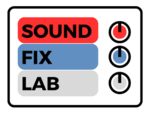In the realm of music production, the creative use of effects can transform a simple sound into something captivating and unique. This article will delve into the characteristics, applications, and guidelines for using popular effects such as Reverb, Delay, Chorus, Flanger, Phaser, Pitch Shifting, Tremolo, and Wah-Wah. Understanding these effects and their various types will empower producers to craft immersive sonic landscapes and add depth to their compositions.
Reverb
Reverb recreates the sonic reflections in a space, providing a sense of depth and ambiance. It is commonly used to make sounds feel more natural and to create a specific environment. When using reverb, consider the size of the virtual space, decay time, and early reflections. Short decay times work well for tight and upfront sounds, while longer decay times suit spacious and ethereal sounds. Common types of reverb include Hall, Plate, Room, and Spring.
Delay
Delay produces echoes by repeating the sound after a set duration. It adds depth, spaciousness, and rhythmic interest to audio. Short delay times create a slapback effect, enhancing the sound’s presence. Longer delay times create echoes that can be used creatively. Consider the feedback level, delay time, and stereo width when working with delay. Types of delay include Tape Delay, Analog Delay, Digital Delay, and Ping Pong Delay.
Chorus
Chorus thickens and widens the sound by duplicating it and introducing slight variations in pitch and timing. It creates a lush, shimmering effect and is commonly used on guitars, synths, and vocals. Experiment with the depth, rate, and feedback parameters to achieve desired results. Different types of chorus include Analog Chorus, Digital Chorus, and Ensemble.
Flanger
Flanger employs a similar concept to chorus but creates a more pronounced jet-like effect. It combines the original signal with a delayed and modulated copy of itself. The parameters to focus on are depth, rate, feedback, and manual delay time. Flanger can add movement and excitement to various instruments, especially electric guitars. Classic Flanger, Jet Flanger, and Through-Zero Flanger are popular types.
Phaser
Phaser imparts a sweeping, swirling effect by modulating the phase of the sound. It splits the signal into two or more paths, modulates their phase relationship, and then recombines them. Phaser is known for its distinctive “swooshing” sound and is frequently used on guitars, synths, and drums. Parameters to explore include depth, rate, feedback, and number of stages. Phaser types include Analog Phaser, Digital Phaser, and Multi-stage Phaser.
Pitch Shifting
Pitch shifting alters the pitch of the sound, either up or down. It can be used creatively to create harmonies, thick textures, or unconventional effects. Pitch shifting parameters include semitone adjustments, fine-tuning, and formant preservation. It is commonly used on vocals, instruments, and special effects. Pitch shifting effects may include Pitch Shifter, Harmonizer, and Octaver.
Tremolo
Tremolo modulates the volume of the sound, creating a rhythmic pulsating effect. It adds movement, intensity, and vintage character to audio. Adjust the rate, depth, and shape of the tremolo waveform to achieve desired results. Tremolo is often applied to guitars, keyboards, and synths to create dynamic and expressive sounds.
Wah-Wah
Wah-wah alters the tone by sweeping a bandpass filter up and down the frequency spectrum. It is typically associated with guitar solos and funk music. By rocking a foot pedal or adjusting the control, musicians can achieve expressive vowel-like sounds. Experiment with the resonance, sweep range, and envelope response for different wah-wah effects.
Mastering the art of using effects in music production is a journey of creativity and experimentation. The effects covered in this tutorial—Reverb, Delay, Chorus, Flanger, Phaser, Pitch Shifting, Tremolo, and Wah-Wah—provide a solid foundation for adding depth, space, movement, and character to your productions. Remember, there are no strict rules when it comes to music production, so feel free to explore and push boundaries to create your unique sonic signature




